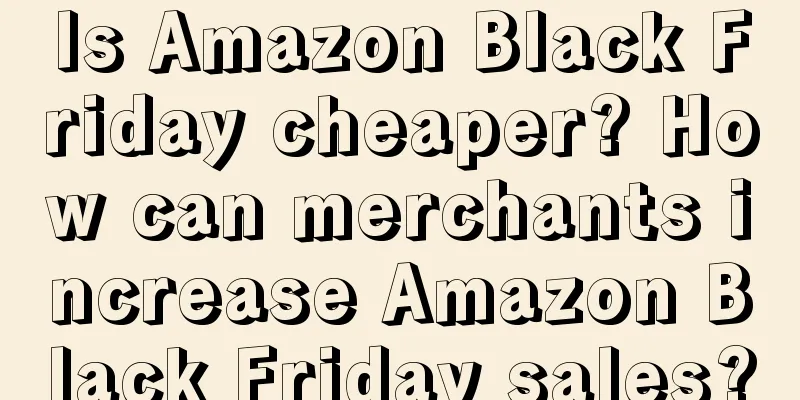Can Alipay’s “touch and go” service take on WeChat Pay?

Alipay wants to do well what Apple failed to do well. When “Scan QR code to pay” is posted everywhere in the streets and alleys, how can Alipay shake the high wall of payment built by QR codes? Merchants were the first to sense Alipay's ambition. In mid-2024, many offline chain brands and service providers discovered that Alipay was promoting a new payment method called "touch and go," which brought them new business opportunities. "Each physical merchant that settles in can receive a maximum subsidy of 6,000 yuan per month. Promoters can also receive rewards. For each machine that settles in a merchant, the promoter can receive a commission of 560 yuan, and the daily income can reach 1,000 yuan. For service providers, the account opening reward is 100-150 yuan/machine, and the sales promotion reward is 40 yuan/60 yuan/80 yuan/machine/month x 6 months." Since its official launch in the first batch of cities including Shanghai, Changsha, Wuhan, Qingdao, Chengdu and Hangzhou on July 8, in just over four months, Alipay's "Touch" has covered more than 50 cities and millions of stores. "Alipay seems to want to kill QR code payment, and it's moving very fast," a service provider commented to 36Kr. Within Alipay, "Touch" is considered the top project in the past two years. According to 36Kr, in early 2023, Ant Group Chairman Jing Xiandong proposed internally to research payment methods that are more convenient than scanning code payment, such as superimposing NFC technology; in July 2023, prototype design was launched; a year later, "Touch" was officially launched. Third-party data shows that although it is still the largest third-party payment app, Alipay's share of China's third-party mobile payment market has dropped from nearly 80% in 2014 to 55% by the end of 2023; its user data has also encountered a growth bottleneck and gradually fallen behind WeChat Pay. Alipay officials have stopped updating data since announcing that its user number reached 1 billion in 2019. "Alipay has long wanted to promote NFC. In the beginning, it promoted QR code payment in a passive response to WeChat Pay. At that time, NFC technology was not popular enough. Alipay now certainly hopes to continue to be a market leader and have new breakthroughs in payment methods." A payment employee told 36Kr. Starting from 2023, Alipay proposed the "dual flywheel" to do a good job in both the Internet platform and the payment APP. It has recently adjusted its organization again, and newly established two business groups, the Alipay Business Group and the Digital Payment Business Group. On the one hand, it will increase content and open up commercialization to find growth, and on the other hand, it will try to innovate in the payment field and consolidate its positioning as a payment tool. Alipay touch device, picture from Alipay official 1. “Touch” everywhereUsers quickly feel the presence of "touch". Xiao Min, who lives in Changsha, found that when she walked into chain stores such as Qianji Bakery, Busy Snacks, Qiandama, and Miniso, and even restaurants near her community, she saw "touch" devices everywhere. Xiao Min, who has been using an Android phone, feels that this new gadget is faster than scanning code to pay: after initially setting the permissions, there is no need to open Alipay. After unlocking the phone, touch the blue ring recognition area. Almost at the same time, a crisp "ding" sound is heard from the payment device, and then the screen displays the payment success message. The whole process takes less than 3 seconds. An industry insider in mobile payment told 36Kr that “touch and pay” is based on NFC (Near Field Communication) technology, so the user experience is very similar to NFC, but in fact it is also the same as QR code payment. Before Alipay was revived, NFC was an old story that was not told well. More than a decade ago, Apple tried to promote NFC payment, but it was unsuccessful. The main reason was that the POS machine fee was as high as 2-3%, and merchants were not willing to use it. In addition, NFC was not popular at the time, and many brands of smartphones did not have this technology. The fee for "touch and go" is only 3‰, and this technology is now popular. The first batch of cities currently have a very high coverage density of "touch and go". Shanghai is the first city where Alipay has been piloted. The "touch and go" function has been installed in the first store in Jing'an Joy City and Huaxin Vegetable Market in the suburbs of Qingpu. In Changsha, whether it is 21 commercial streets and complexes such as Guojin Street and Hisense Plaza, or snack chains such as Black Classic Stinky Tofu, Juewei Duck Neck, Snacks Are Busy, Dai Yonghong, or chain convenience stores such as Meiyijia and 711, or restaurant brand stores, tens of thousands of stores have installed the function. The use scenarios of "touch and go" are also richer. It can not only pay, but also order food. Xiao Min once ordered food at a hot pot restaurant on Guojin Street by "touch and go". The process was very smooth. There was no need to open WeChat and Meituan Dianping separately. The closed loop from ordering to payment can be completed within Alipay. You can order food directly by tapping it. The picture was taken by the author Since the birth of QR code payment, which unified the payment ecosystem, no payment method has emerged that can compete with it for a long time. Even though face-scanning payment, which was commercialized on a large scale seven years ago due to the introduction of facial recognition in smartphones, is still a long way from becoming a mainstream payment method. Two years ago, WeChat promoted palm-scanning payment, which was popularized in a small area in specific scenarios such as campuses, but did not actually make much of a splash. At a time when companies are cutting budgets, Alipay’s determination to promote “touch and pay” is particularly noteworthy. According to 36Kr, the promotion subsidy for additional installations exceeded 10 billion yuan in just 4 months, and Alipay has continuously transferred personnel to supplement the project team. An internal statement is that Alipay plans to invest at least 30 billion yuan in the first batch of promotions. “Touch it” has indeed played a role in attracting new users and traffic to Alipay to a certain extent. Joe lives in Beijing. He usually only uses JD.com and Pinduoduo for shopping, and WeChat and Meituan for daily life services. He has never downloaded Alipay before, but recently the clerk at the Qiandama store downstairs in his community would pick up the "touch and pay" machine and sell it to him almost every time he paid. Alipay also uses a similar gamification method to collect five blessings "I was not used to it at first, but now I use it from time to time. I can't resist the discounts, sometimes I can get several dollars off." However, Joe admitted that if there is no recommendation from the store clerk or if he doesn't get a big discount, he is still used to scanning the code with WeChat. After interviewing users in Shanghai, Hangzhou and Changsha, 36Kr also found that "touch and go" is more beneficial to Android users because it is almost a new function for them and the usage steps are significantly reduced compared to scanning a code. iOS users have many complaints about "tap and go". Due to the restrictions of Apple iOS on the use of NFC outside the ecosystem, many iOS users say that "tap and go" is not as convenient as Apple's own NFC payment: "It's not a simple tap, but you have to call up Alipay every time, which is very troublesome. Android is like swiping an access card, just tap and go." For many iOS users, tap and go still require setting permissions and opening the Alipay APP, which is almost the same as scanning a code. The consensus of iOS users is that unless Alipay and Apple Pay cooperate to launch virtual cards, it will still be inconvenient. 2. Occupy offlineWhat is of great strategic significance to Alipay is that users who used to only use Alipay when placing orders on Taobao and prefer to pay with WeChat offline are now more willing to use Alipay to pay offline because of the "touch and go" feature. With the help of Taobao e-commerce, Alipay has achieved good online conversions, but it has always lacked more powerful and differentiated means offline. There are historical reasons for this. Alipay launched barcode payment a year earlier than WeChat (2011) and also promoted QR code first (2012), but at that time Alibaba lacked mature mobile products. Taobao Mobile was not launched until October 2013, and all-in mobileization was not until 2014. Alipay was just a simple payment tool, and QR code payment did not become popular immediately in the hands of Alipay. This gave WeChat Pay an opportunity. It quickly relied on WeChat's social capabilities and combined it with the "scan" function to penetrate offline scenarios faster and deeper, such as scanning codes to order food and identifying tickets, and reaping the benefits of mobileization. As a result, Alipay was forced to change from a pioneer to a follower. Half a year after its launch, many users have begun to frequently use the new “tap and pay” feature, but “tap and pay” is still in its early stages with many issues to be resolved, and it is too early to talk about whether it can replace QR code payment. The first and foremost issue is security and trust. In the eyes of some users, the "tap and go" feature is too convenient and counterproductive: scanning a code to pay requires entering a password, and both face and fingerprint recognition require biometric identification, but tap and go even eliminates the verification step. "Scanning a code to pay is like handing over money. I have the power to change how much money to pay or not. But tapping someone is like someone reaching into my pocket and taking money out. I don't know how much money to take. I don't feel in control or safe," one user told 36Kr. Others worry that if they forget to lock their phone and keep it on all the time, and put it in their pocket or bag, it can be "tapped" at will on the street. An agent of "touch and go" believes that the use of touch and go is actually subject to certain restrictions. QR codes can be posted everywhere, and the allowed distance is farther. Some shopping mall parking lots can also scan the receipt code in advance for parallel processing. Touch and go still need to be posted on the machine, and merchants have to queue up to process orders. During peak hours, they are simply too busy. "For merchants, scanning the code is actually more efficient. Multiple people can scan the code and pay at the same time. According to the current hardware model, without subsidies, merchants will be less willing to cooperate." At present, the merchants who are willing to actively promote "touch and pay" are still mainly various chain snack and pastry stores and shopping mall brand stores, because "touch and pay" allows users to directly join the membership system, which is conducive to the private domain operation of merchants. However, large brands with self-service checkout systems such as MUJI and UNIQLO have not yet connected to "touch and pay". Smaller businesses, such as mom-and-pop stores and various self-employed individuals, do not have enough energy to operate and promote tap-and-go devices. Store owners often leave the machines at the cashier counter after receiving subsidies, and do not actively recommend them to users in order to save trouble. Since tap-and-go requires both merchants and users to maintain a good network environment (NFC only requires merchants to connect to the POS), these small stores often have unstable networks that delay user payments. A Zhihu user once lamented: "There is no other app like Alipay, which has many users and money, but the purpose of opening the app is to show you a bunch of advertisements, small games, and videos, but they don't want you to pay offline." It is an irreversible trend in the Internet industry that apps are becoming more and more important. Only by adding innovative scenarios such as "touch and go" can Alipay have the opportunity to reshape consumers' payment mindsets and consolidate its position as a national payment app. Author | Peng Qian Editor | Qiao Qian |
<<: Full record of cross-border e-commerce transformation in 2024
>>: Bloggers anxious about business orders flock to Xiaohongshu to become buyers
Recommend
Xiaohongshu has traffic!
In the wave of digital marketing, Xiaohongshu, wit...
It will go viral as soon as you write! Three tips for running Xiaohongshu
This article shares how to improve content perform...
What is the most difficult thing about running an e-commerce business?
Online shopping has become a common thing in our l...
The discount calculation method of the wish merchant promotion platform will be optimized and updated
Attention! Wish has further optimized and updated ...
Xiaohongshu Launch Review Guide
In the world of digital marketing, every advertisi...
Not only love, this month the brand is also talking about freedom and distance
February is the first full working month after the...
Kuaishou, Bilibili, and Xiaohongshu are trying to grow during 618
In the fierce competition of the 618 promotion, in...
What are the eight Amazon sites? What are their advantages?
Everyone who does Amazon knows that the first site...
How does Amazon analyze the market? What aspects does it analyze?
Amazon is the best developed cross-border e-commer...
This copywriting is very bitter.
Recently, a new brand, But Lab, launched a coffee ...
Not only cross-border collaborations, these recent brand cases have also made young people crazy!
This article mainly starts with brand co-branding ...
Can Amazon Prime be cancelled? What is the use of Amazon Prime?
Amazon Prime is actually the same as JD Plus membe...
How long does it take for an Amazon store to be closed if it is not in operation? Will it be downgraded?
After you open a store on Amazon, if you don't...
7 core questions about Xiaohongshu’s community, growth, and people-oriented approach
This article takes the growth of Xiaohongshu as th...
Tencent increases investment in local life, with video accounts taking the lead
Entering the local life, WeChat Video Account crea...









